History backup: seven inventors you may not have heard of
On March 31, the international backup day is celebrated around the world - and this year we are conducting a backup research for the fifth time. You can find the results on our website . Interestingly, according to the study, 92.7% of consumers reserve their data at least once a year - this is 24% more than a year earlier. At the same time, 65% of respondents admitted that they or their relatives over the past year lost data by accident or due to hardware / software failures. And this is almost 30% more than in 2018!

As you can see, even in the case of computer memory, backup does not help everyone. Needless to say, a more complex and confused historical memory. Because of her omissions, many prominent minds do not receive due recognition either before or after death. Their names and merits are completely forgotten, and the discoveries are assigned to third parties.
In this post, we will try to make a partial backup of historical memory and recall some almost forgotten scientists and inventors, the fruits of whose work we are reaping today. In the end, we’ll talk about our new R&D division in Bulgaria , where we are actively recruiting specialists.
Most people believe that the inventor of telephone communications is Scot Alexander Graham Bell. Meanwhile, Bell did not and does not have the right to be called the "father of telephony." First discovered Antonio Meucci’s method of transmitting sound through electricity and wires. This Italian invented the phone quite by accident. He conducted experiments in medicine and developed a method of treating people with electricity. In one of the experiments, Antonio connected a generator, and his subject loudly uttered a phrase. To Meucci's surprise, the assistant’s voice was reproduced by the apparatus. The inventor began to understand what was the reason, and after a while he designed the first prototype of a voice-over-wire system.
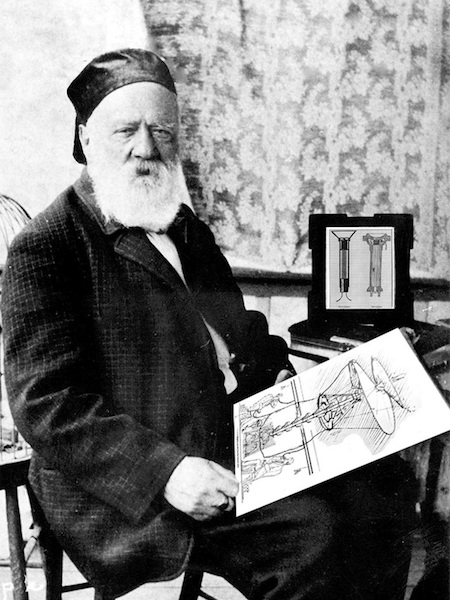
However, Antonio Meucci was not a successful businessman, and his discovery was simply stolen. After the news about the invention of the Italian appeared in the press, a representative of Western Union came to the scientist's house. He was generous with compliments and offered Antonio a decent reward for his invention. The trusting Italian immediately “leaked” all the technical details of his proto-telephone. After some time, Meucci was stabbed in the back - the newspaper published news about Bell, which demonstrated the operation of the telephone. And the sponsor of his "show" was Western Union. Antonio simply could not prove his rights to the invention, he died, having gone broke due to legal costs.
Only in 2002, the US Congress rehabilitated the name of the inventor by publishing resolution 269, in which Antonio Meucci is recognized as the real inventor of telephone communications.

Rosalind Franklin, an English biophysicist and radiologist, is a prime example of discrimination against female scientists. In the scientific community of the middle of the last century, this was a frequent occurrence. Rosalind studied the structure of DNA and the first determined that DNA consists of two chains and a phosphate backbone. She showed her discovery, confirmed by x-rays, to her colleagues - Francis Crick and James Watson. As a result, it was they who received the Nobel Prize for the discovery of the structure of DNA, and they all unjustly forgot about Rosalind Franklin.
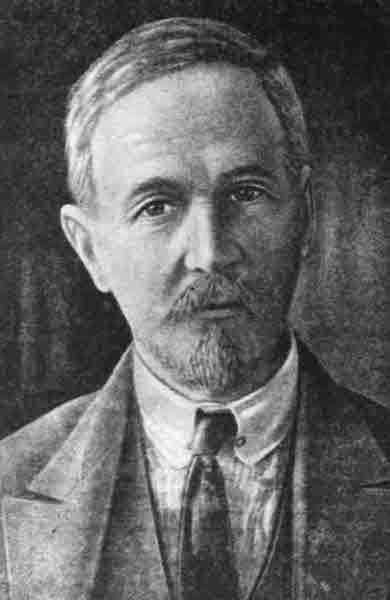
Boris Rosing, a Russian scientist with Dutch roots, can be considered the father of television technology, because he was the first to design an electronic picture tube. Although systems for transmitting images existed even before the discovery of Boris Rosing, all of them had a significant drawback - they were partially mechanical.
At the Rosing tube, the electron beam was deflected using the magnetic field of the induction coils. The transmitter used an inertia-free photocell with an external photoelectric effect, and the receiver was a cathode flux control system and a cathode ray tube with a fluorescent screen. The Rosing system allowed to abandon the optical-mechanical devices for transmitting images in favor of electronic ones.
During the years of Soviet power, Boris Rosing fell under the hand - he was arrested for aiding counter-revolutionaries and exiled to the Arkhangelsk region without the right to work. And although, thanks to the support of colleagues, a year later he managed to transfer to Arkhangelsk and enter the Department of Physics of the Arkhangelsk Forestry Institute, his health was undermined - a year later he died. The Soviet government did not talk about this, and the title of “inventor of the television” went to Boris Rosing’s student Vladimir Zvorykin. The latter, however, never hid that he made all his inventions, developing the ideas of his teacher.

The name of this scientist is associated with many interesting inventions that would be enough for a real espionage novel. Among them are the Theremin musical instrument, the Far-Vision television transmission system, radio-controlled unmanned aerial vehicles (prototypes of modern cruise missiles), the Buran wiretapping system, which read information from glass vibration in the room. But Theremin’s most notorious invention was the Zlatoust transmission device, which for seven years supplied secret information directly from the office of the US ambassador to the USSR.
The design of Zlatoust was unique. He, as a detector receiver, worked on the energy of radio waves, so the US intelligence services could not detect the device for so long. The Soviet intelligence services irradiated the building of the US Embassy with a powerful source at the resonator frequency, after which the device “turned on” and began to broadcast sound from the ambassador’s office.
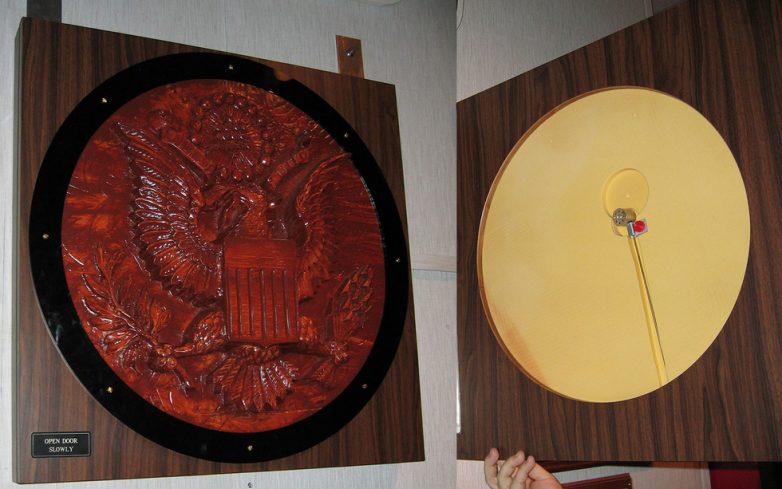
The "bug" was hidden in a decorative carved copy of the Great Seal of the United States, which was presented to the American ambassador by the pioneers of Artek. The bookmark was discovered by accident. But even after that, American experts for a long time could not understand how it works. It took Western scientists a year and a half to understand this task and make at least an approximate working analogue of Zlatoust.
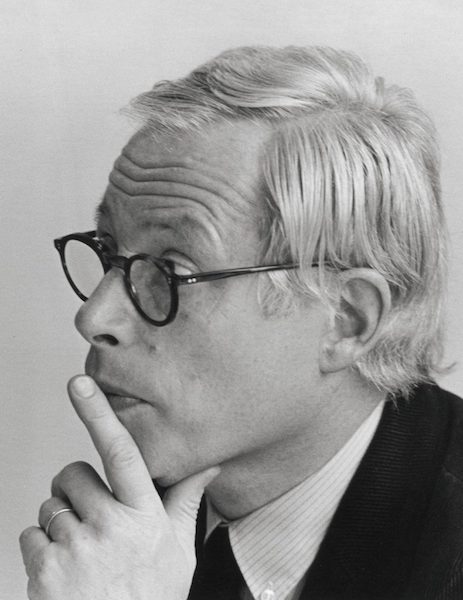
The name of Dieter Rams is associated with Braun, in which he worked as an industrial designer from 1962 to 1995. However, if you believe that the design of the technology developed under his leadership is hardly relevant, you are mistaken.
It is worth exploring the early work of Rams, and it becomes clear where Apple designers drew their inspiration from. For example, the Braun T3 pocket radio is very similar to the design of earlier iPod models. The Power Mac G5 system unit looks almost one-on-one like a Braun T1000 radio. Compare yourself:

It was Dieter Rams who correctly formulated the main principles of modern design — practicality, simplicity, and reliability. On their basis, almost all modern electronic devices are developed that have smoothed shapes and contain a minimum of elements.
By the way, Rams also set some principles for the use of color in electronics. In particular, he came up with the designation to designate the record button in red and invented a color indication of the sound level, which changes color when the amplitude increases.
Alan Curtis Kay is another designer whose work determined the appearance of personal computers and the philosophy of the interface of modern technology. With the advent of microelectronics, it became clear that a computer is no longer a room filled with cabinets. And it was Alan who came up with the concept of the first laptop computer. The layout of his Dynabook, created in 1968, easily guesses both a modern laptop and tablet.
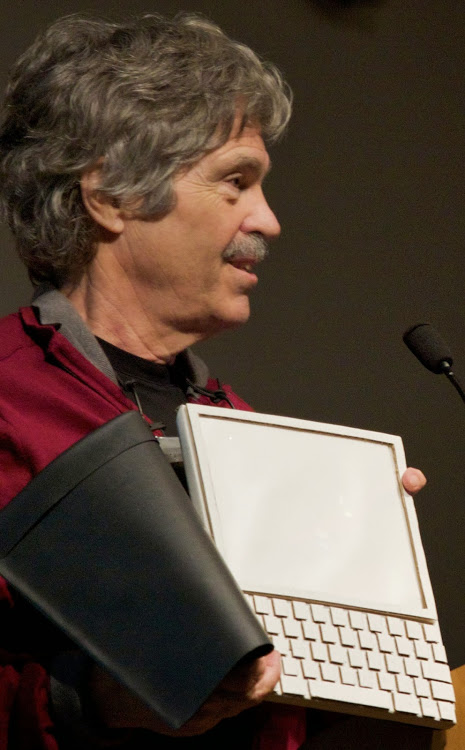
Another person who makes us familiar devices look that way, and not otherwise, is William Grant Mogridge. In 1979, he invented the hinged folding mechanism of a laptop. The same mechanism later began to be used in clamshell phones, game consoles, etc.
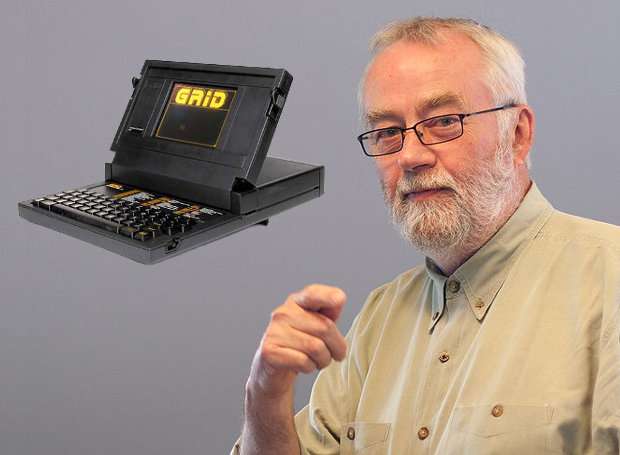
Fortunately, today, talented inventors have many opportunities to tell about themselves and their work - thanks, the Internet. We at Acronis are also working to ensure that various important information is not lost. And we will be happy if you help us with this.
Acronis now has 27 offices with over 1300 employees. Acronis acquired T-Soft last year, and as a result, the new Acronis Bulgaria R&D Center was opened in Sofia, which should become the company's largest development office in the future.

Within three years, we plan to invest $ 50 million in the new center and expand the staff to 300 people. We are looking for a lot of different specialists who will develop cyber defense technologies, support the work of data centers and develop related products and services - these are Python / Go / C ++ developers, support engineers, Q&A and more.
In the process of moving, we help new employees with documents, taxes, interaction with the authorities and generally advise on all issues. We pay one-way tickets for the whole family of the employee, housing allowance and children, and also allocate an additional amount for the arrangement of the apartment and a housing deposit. Finally, we organize acquaintance with the country and language training, help to open a bank account, find a school / gym and other institutions. Well, of course, we leave contacts in case of emergency.
A full list of vacancies is available here , and on the same page you can send a resume. We welcome your feedback!

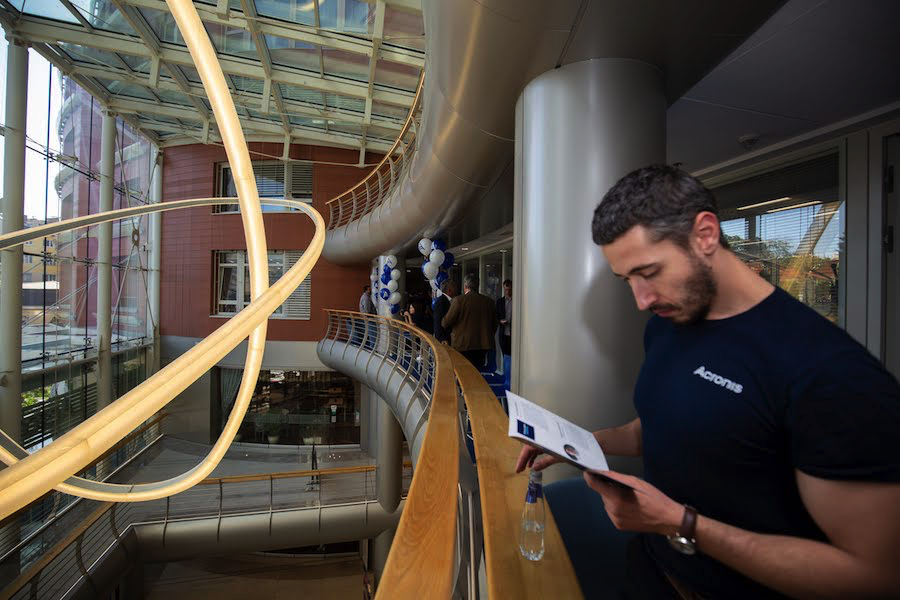
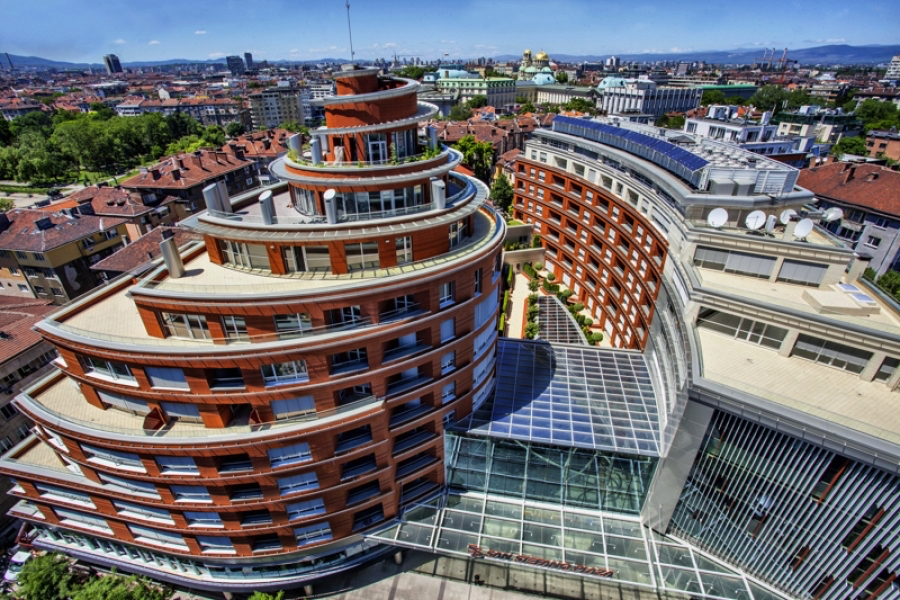
Source: vagabond.bg

As you can see, even in the case of computer memory, backup does not help everyone. Needless to say, a more complex and confused historical memory. Because of her omissions, many prominent minds do not receive due recognition either before or after death. Their names and merits are completely forgotten, and the discoveries are assigned to third parties.
In this post, we will try to make a partial backup of historical memory and recall some almost forgotten scientists and inventors, the fruits of whose work we are reaping today. In the end, we’ll talk about our new R&D division in Bulgaria , where we are actively recruiting specialists.
Antonio Meucci - the forgotten inventor of the phone
Most people believe that the inventor of telephone communications is Scot Alexander Graham Bell. Meanwhile, Bell did not and does not have the right to be called the "father of telephony." First discovered Antonio Meucci’s method of transmitting sound through electricity and wires. This Italian invented the phone quite by accident. He conducted experiments in medicine and developed a method of treating people with electricity. In one of the experiments, Antonio connected a generator, and his subject loudly uttered a phrase. To Meucci's surprise, the assistant’s voice was reproduced by the apparatus. The inventor began to understand what was the reason, and after a while he designed the first prototype of a voice-over-wire system.

However, Antonio Meucci was not a successful businessman, and his discovery was simply stolen. After the news about the invention of the Italian appeared in the press, a representative of Western Union came to the scientist's house. He was generous with compliments and offered Antonio a decent reward for his invention. The trusting Italian immediately “leaked” all the technical details of his proto-telephone. After some time, Meucci was stabbed in the back - the newspaper published news about Bell, which demonstrated the operation of the telephone. And the sponsor of his "show" was Western Union. Antonio simply could not prove his rights to the invention, he died, having gone broke due to legal costs.
Only in 2002, the US Congress rehabilitated the name of the inventor by publishing resolution 269, in which Antonio Meucci is recognized as the real inventor of telephone communications.
Rosalind Franklin - the discoverer of DNA

Rosalind Franklin, an English biophysicist and radiologist, is a prime example of discrimination against female scientists. In the scientific community of the middle of the last century, this was a frequent occurrence. Rosalind studied the structure of DNA and the first determined that DNA consists of two chains and a phosphate backbone. She showed her discovery, confirmed by x-rays, to her colleagues - Francis Crick and James Watson. As a result, it was they who received the Nobel Prize for the discovery of the structure of DNA, and they all unjustly forgot about Rosalind Franklin.
Boris Rosing is a true inventor of television

Boris Rosing, a Russian scientist with Dutch roots, can be considered the father of television technology, because he was the first to design an electronic picture tube. Although systems for transmitting images existed even before the discovery of Boris Rosing, all of them had a significant drawback - they were partially mechanical.
At the Rosing tube, the electron beam was deflected using the magnetic field of the induction coils. The transmitter used an inertia-free photocell with an external photoelectric effect, and the receiver was a cathode flux control system and a cathode ray tube with a fluorescent screen. The Rosing system allowed to abandon the optical-mechanical devices for transmitting images in favor of electronic ones.
During the years of Soviet power, Boris Rosing fell under the hand - he was arrested for aiding counter-revolutionaries and exiled to the Arkhangelsk region without the right to work. And although, thanks to the support of colleagues, a year later he managed to transfer to Arkhangelsk and enter the Department of Physics of the Arkhangelsk Forestry Institute, his health was undermined - a year later he died. The Soviet government did not talk about this, and the title of “inventor of the television” went to Boris Rosing’s student Vladimir Zvorykin. The latter, however, never hid that he made all his inventions, developing the ideas of his teacher.
Leo Termen - a diamond of Russian science

The name of this scientist is associated with many interesting inventions that would be enough for a real espionage novel. Among them are the Theremin musical instrument, the Far-Vision television transmission system, radio-controlled unmanned aerial vehicles (prototypes of modern cruise missiles), the Buran wiretapping system, which read information from glass vibration in the room. But Theremin’s most notorious invention was the Zlatoust transmission device, which for seven years supplied secret information directly from the office of the US ambassador to the USSR.
The design of Zlatoust was unique. He, as a detector receiver, worked on the energy of radio waves, so the US intelligence services could not detect the device for so long. The Soviet intelligence services irradiated the building of the US Embassy with a powerful source at the resonator frequency, after which the device “turned on” and began to broadcast sound from the ambassador’s office.

The "bug" was hidden in a decorative carved copy of the Great Seal of the United States, which was presented to the American ambassador by the pioneers of Artek. The bookmark was discovered by accident. But even after that, American experts for a long time could not understand how it works. It took Western scientists a year and a half to understand this task and make at least an approximate working analogue of Zlatoust.
Dieter Rams: Apple Electronics Design Mastermind

The name of Dieter Rams is associated with Braun, in which he worked as an industrial designer from 1962 to 1995. However, if you believe that the design of the technology developed under his leadership is hardly relevant, you are mistaken.
It is worth exploring the early work of Rams, and it becomes clear where Apple designers drew their inspiration from. For example, the Braun T3 pocket radio is very similar to the design of earlier iPod models. The Power Mac G5 system unit looks almost one-on-one like a Braun T1000 radio. Compare yourself:

It was Dieter Rams who correctly formulated the main principles of modern design — practicality, simplicity, and reliability. On their basis, almost all modern electronic devices are developed that have smoothed shapes and contain a minimum of elements.
By the way, Rams also set some principles for the use of color in electronics. In particular, he came up with the designation to designate the record button in red and invented a color indication of the sound level, which changes color when the amplitude increases.
William Mogridge and Alan Kay: the forefathers of modern laptops
Alan Curtis Kay is another designer whose work determined the appearance of personal computers and the philosophy of the interface of modern technology. With the advent of microelectronics, it became clear that a computer is no longer a room filled with cabinets. And it was Alan who came up with the concept of the first laptop computer. The layout of his Dynabook, created in 1968, easily guesses both a modern laptop and tablet.

Another person who makes us familiar devices look that way, and not otherwise, is William Grant Mogridge. In 1979, he invented the hinged folding mechanism of a laptop. The same mechanism later began to be used in clamshell phones, game consoles, etc.

Fortunately, today, talented inventors have many opportunities to tell about themselves and their work - thanks, the Internet. We at Acronis are also working to ensure that various important information is not lost. And we will be happy if you help us with this.
Welcome to Acronis Bulgaria
Acronis now has 27 offices with over 1300 employees. Acronis acquired T-Soft last year, and as a result, the new Acronis Bulgaria R&D Center was opened in Sofia, which should become the company's largest development office in the future.

Within three years, we plan to invest $ 50 million in the new center and expand the staff to 300 people. We are looking for a lot of different specialists who will develop cyber defense technologies, support the work of data centers and develop related products and services - these are Python / Go / C ++ developers, support engineers, Q&A and more.
In the process of moving, we help new employees with documents, taxes, interaction with the authorities and generally advise on all issues. We pay one-way tickets for the whole family of the employee, housing allowance and children, and also allocate an additional amount for the arrangement of the apartment and a housing deposit. Finally, we organize acquaintance with the country and language training, help to open a bank account, find a school / gym and other institutions. Well, of course, we leave contacts in case of emergency.
A full list of vacancies is available here , and on the same page you can send a resume. We welcome your feedback!



Source: vagabond.bg
